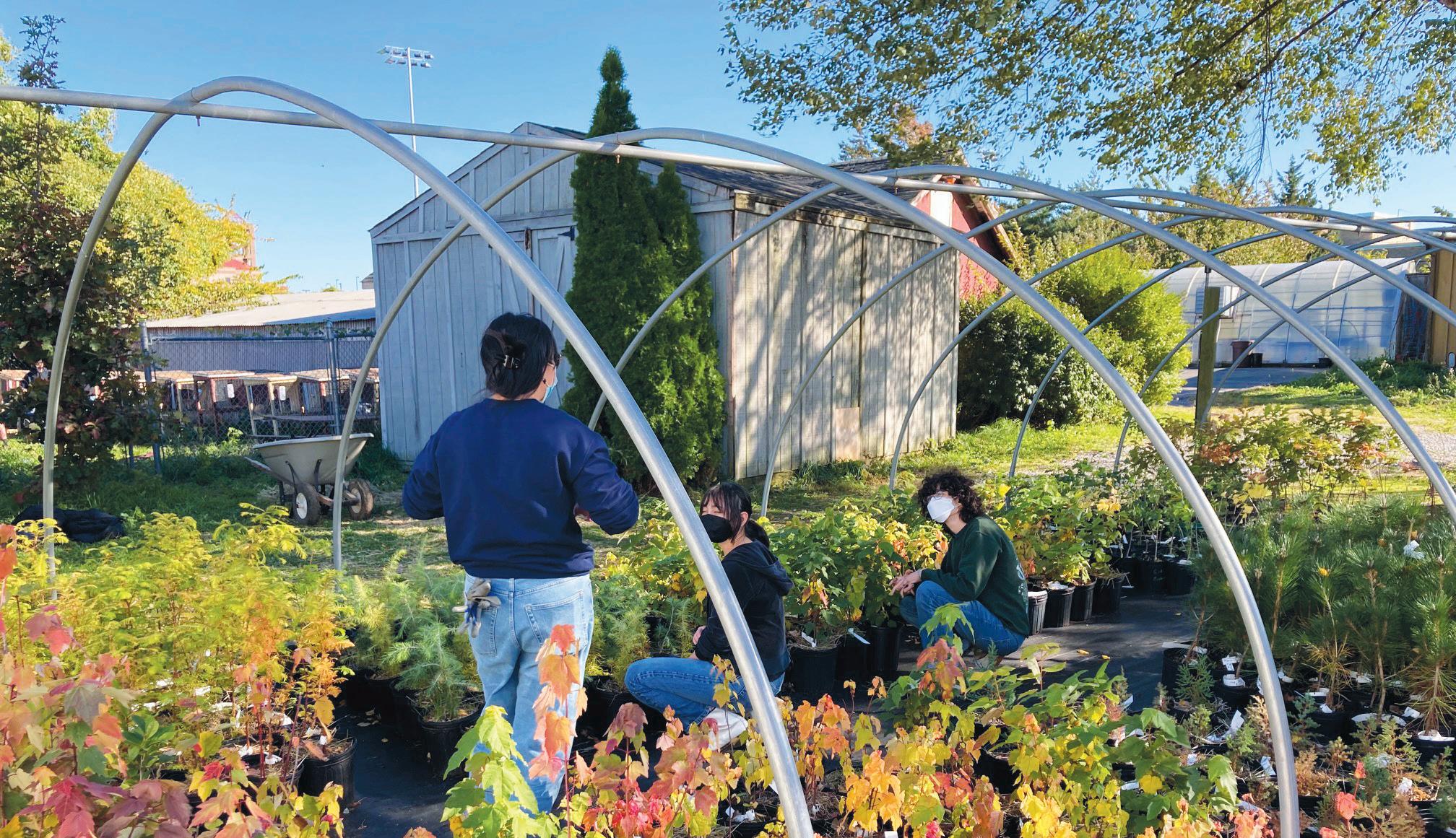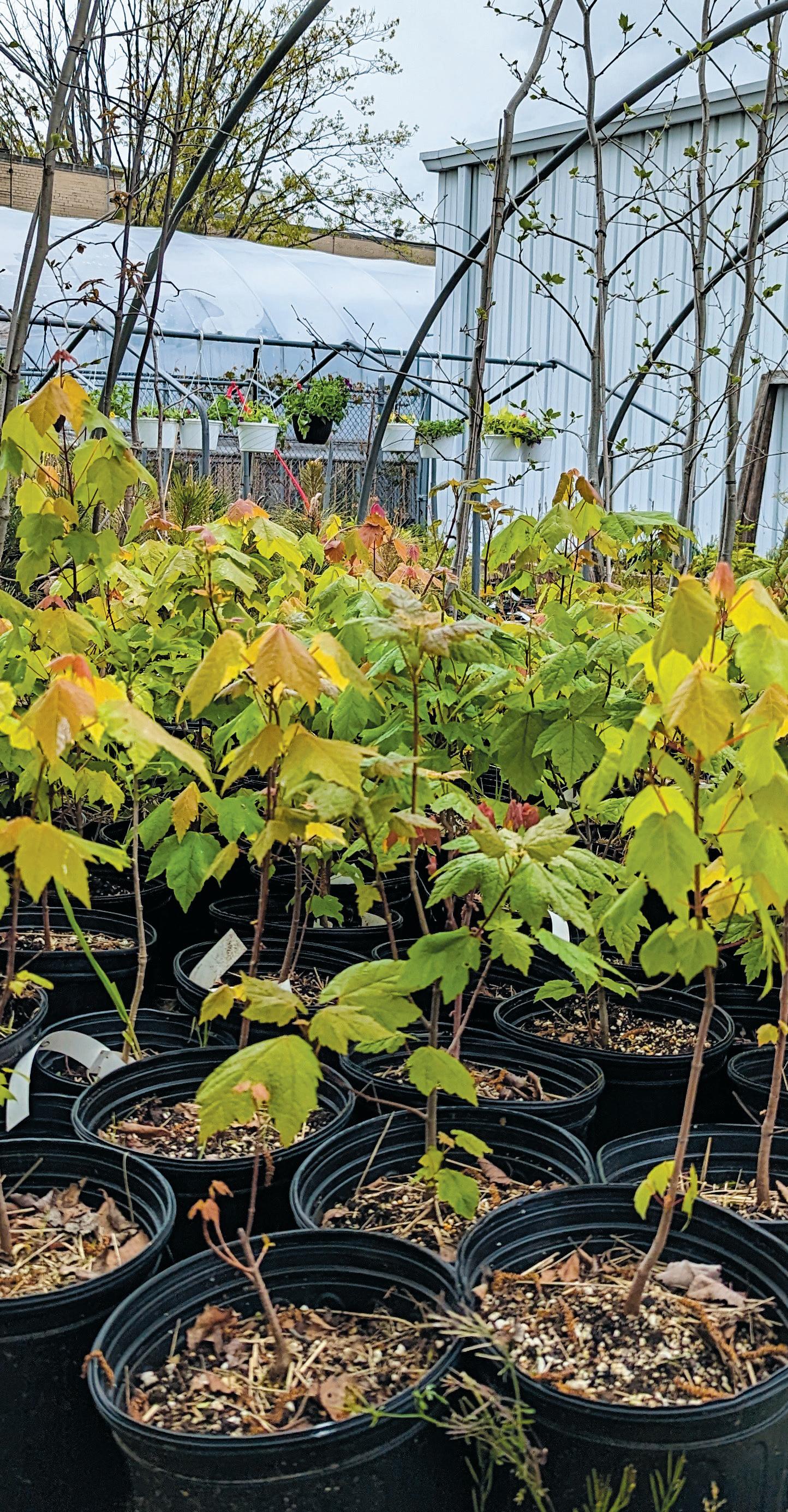Community Tree Planting
Technology meets trees for the greatest impact
Atree is a net positive, regardless of the neighborhood in which it’s planted. Every city tree helps clean the air and water. Each is home to any number of bugs, creatures, and critters — not to mention a source of physical and mental health benefits for people.
When it’s placed in a location that needs those benefits most, a tree can be a workhorse. Placing a lot of trees in neighborhoods of greatest need is a cornerstone of our commitment to planting 500 million trees by 2027. That final tree count illustrates scale, but the real story is where those trees will be planted.

To do that right requires insights, science, data, information, and technology to pull it all together. Ultimately, the Arbor Day Foundation turned to NatureQuant to make it happen.
NatureQuant is a technology and research company with products that help highlight the positive impact nature, green spaces, and trees have on a neighborhood’s health and well-being. Not only can NatureQuant’s data highlight the impact trees have on a neighborhood, but it
can also help determine which neighborhoods need more trees in the first place.
The organization has created an algorithm that pulls public data, satellite imagery, and image-recognition software to map where nature is plentiful and where it is needed across the country. It then provides a rating (called a NatureScore) on a 0–10 scale, with 10 having the lowest amount of nature.
This approach can help the Foundation determine which neighborhoods around the country need trees the most — identifying communities that are both naturedeprived and facing other socioeconomic disadvantages such as low income, education, employment, or housing shortages.
Combining an unmatched network of local tree planting partners across the country with NatureQuant’s robust research and technology has created a new standard for community tree planting — ensuring more trees are planted where they are needed most.
JULY/AUGUST 2023
Growing an Arbor Day Tradition

New York students cultivate trees to distribute on Arbor Day
On a typical day at John Bowne High School, students head out to their 4-acre land laboratory to grow trees, care for animals, and cultivate orchard and field crops.

One might assume this setup is in a rural area, but that’s far from the case. It’s actually located in the largest metropolitan area in the country — New York City.
Based in Flushing, Queens, John Bowne has six specialized programs juniors and seniors can major in, including STEM research, creative arts, and law.
Their agriculture program is particularly special. Through the school’s on-site poultry house, large animal barn, exotic animal laboratory, greenhouse, and orchard, students are offered a handson environment to explore their passions and prepare for their future careers.
Learning and celebrating
Part of the students’ yearly agriculture work is growing 5-gallon container trees, which the New York City Parks Department then distributes to other schools to plant on public sites on Arbor Day.
“It’s a fantastic program that allows our students to take care of these Arbor Day trees and learn the aspects of growing them, whether it’s pruning, watering, keeping pests out, and just keeping them healthy for an extended period of time,” said Patrycja Zbrzezny, the school’s assistant principal and agriculture supervisor.
The project started 23 years ago and has been ongoing ever since. Trees of varying sizes grow in the nursery yearround, ensuring the school has an adequate inventory when April rolls around.

“A lot of students don’t even know what Arbor Day is, so it’s a great learning experience for them,” she said. “Not only are they learning these skills that they’re going to need in their potential careers, but also, there’s a whole day to celebrate trees.”
This past Arbor Day, 217 trees grown by John Bowne students were planted across 48 sites in New York City. A large gift from an Arbor Day Foundation donor in Manhattan supported the plantings.
Children in the city typically have less opportunities to plant trees and be out in nature — making the collaboration all the more important.
“It’s a wonderful experience not only for our students, but for other students throughout the city. And it’s something that we hope to do forever,” Patrycja said.
“It really is a huge community event. We don’t necessarily all see each other on that day, but we know the planting is going on and the trees are being spread around the city.”
As an alumna of the agriculture program herself, Patrycja has seen trees planted during her time at the school now growing tall. That, she said, says it all.
“Students can know that they’re part of something bigger and more permanent. They’re part of making the city a little bit greener and more enjoyable for them and their future families. I think that’s the best part.”
2 Arbor Day Foundation Oak Society Insights • July/August 2023
A lot of students don’t even know what Arbor Day is, so it’s a great learning experience for them. Not only are they learning these skills that they’re going to need in their potential careers, but also, there’s a whole day to celebrate trees.
 –Patrycja Zbrzezny
–Patrycja Zbrzezny

Meet Our Team
Perry, Mid-Level Giving Manager
What do you love about your work at the Arbor Day Foundation?
I love that each day at the Arbor Day Foundation is unique. One day I am drafting a brief, the next I’m physically planting a tree in a local park, and on the third day, I could be hosting a webinar for the Foundation’s Oak Society members. I appreciate knowing that, no matter how my time unfolds, my work has a tangible impact on the world in which we live.
How did you develop a connection with trees?
Like many of the Arbor Day Foundation’s supporters, my love of trees began as a child. A towering walnut tree, two burning bushes, and three lush pine trees surrounded my childhood home. They were the backdrop of family photos, my summer playmates, and sources of respite through high school and college.
What is your favorite tree?
My favorite tree is the weeping willow. One day I hope to own a home with a weeping willow in the yard, offering a jungle gym and shade for my two children and shelter for the wildlife around me.
Arbor Day Foundation Oak Society Insights • July/August 2023 3
Shana
Trees as a Force for Equity
A grassroots approach to combatting Nashville’s urban heat islands
There is a sense of pride in Parkwood Estates, a neighborhood in North Nashville. It’s one that comes from having roots in a community. There is a quiet strength here, a tenacity to stick with the neighborhood even as the city around it changes. And the city has changed a lot.
While the population booms in certain areas, other neighborhoods like Parkwood Estates, often majority-minority and lower-income, have been overlooked for decades when it comes to investment. The lack of infrastructure funding in these areas means parks and green spaces are few and far between. As temperatures rise, a lack of tree canopy citywide can create urban heat islands — areas where buildings and other hard surfaces absorb and retain heat, increasing the overall temperature by as much as 10 degrees or more.
“We saw that a lot of our low-income and minority communities are those that are bearing a disproportionate amount of urban heat. So those communities lack access to cooling strategies, lack access to tree canopy,” said Kendra Abkowitz, chief sustainability & resilience officer in the Nashville Mayor’s Office.
One of the strongest strategies to combat this issue is tree planting, but up to 94% of land in Nashville is privately owned. How can individual homeowners be encouraged to plant on their properties? The answer comes from those who know their communities best.

Growing from the ground up
With funding from the Arbor Day Foundation, the Cumberland River Compact followed Nashville natives’ lead on creating healthier, more equitable communities. Local experts identified 12 neighborhoods where planting efforts would be prioritized, and from there, neighborhood planting captains got to work.



Planting captains are members of the community who advocate for their neighbors. They reach out to help residents sign up for free trees to plant in their yard, either on their own or with help. George Acklin is one of those planting captains, proudly representing Parkwood Estates. “It’s important to have somebody in an in-depth position as a tree captain who people know and have confidence in. They are confident in me because I’ve been here a long time,” he said.
The impact of this neighbor-to-neighbor connection is powerful. On a clear fall day, a planting party brought together nearly 100 volunteers to put about 300 trees in the ground. Tree by tree, residents saw what they could accomplish together. “Especially with an initiative like this, people are starting to realize how they can play a role in shaping their community far more than what they did before,” said Tranyce Parmer, another neighborhood planting captain. Creating more equitable neighborhoods is about more than planting the right trees in the right places. It’s about investing in a more equitable future — one community at a time.
Arbor Day Foundation 211 N. 12th St. Lincoln, NE 68508 50137101








